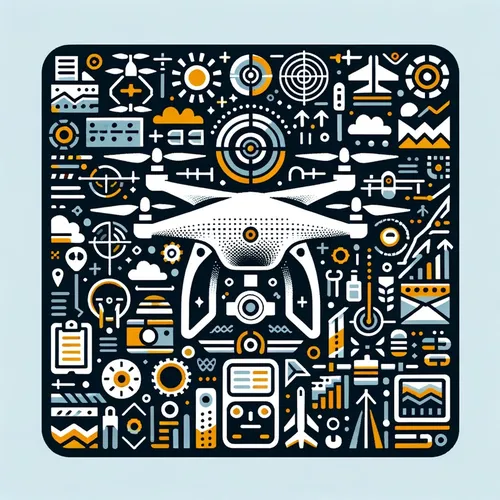Drone Pilots Soar as AI Tech Takes Flight—Secrets to Staying Competitive in the Booming Industry
- Author
- Quiet. Please
- Published
- Wed 27 Aug 2025
- Episode Link
- https://www.spreaker.com/episode/drone-pilots-soar-as-ai-tech-takes-flight-secrets-to-staying-competitive-in-the-booming-industry--67527829
This is you Professional Drone Pilot: Flight Tips & Industry Updates podcast.
Professional drone pilots know that mastery in the skies begins with sharpening advanced flight techniques and keeping equipment at peak performance. Recent innovations such as enhanced obstacle avoidance systems and fully autonomous navigation are transforming the field, allowing operators to execute complex maneuvers with greater safety and precision. Those flying in urban or controlled spaces increasingly rely on drones equipped with AI-driven automation and advanced payloads, pushing the boundaries of what is possible in aerial inspections and cinematography. Maintenance routines now emphasize thorough preflight checks, battery health monitoring, and regular software updates to reduce the risk of mission failure and prolong the life cycle of drones.
Business opportunities for commercial pilots are expanding rapidly, driven by growth in agriculture, real estate, infrastructure inspection, and even autonomous cargo and pesticide delivery services. According to Renub Research, the commercial drone market is projected to swell from nearly thirty billion dollars in 2024 to over sixty-eight billion by 2033, fueled by demand in industries like construction, logistics, and environmental monitoring. The real estate sector stands out where National Association of Realtors data highlights that properties featuring aerial drone images or tours are sixty-eight percent more likely to sell, so pilots who can deliver high-quality visuals and editing services are poised for strong returns.
Certification remains essential—operators must hold government-issued pilot certificates such as the FAA Part 107 Remote Pilot Certificate in the United States, stay current through scheduled recurrent training, and adhere to evolving regulatory standards. In Europe, harmonized rules now require stricter technical specifications and safety certification, particularly for operations near bystanders or in controlled airspace.
Client relationships and competitive pricing strategies are more critical than ever; combining bundled packages for services, providing detailed analytics or post-processing, and maintaining transparent communications help to establish trust and secure repeat business. Frequent shifts in weather demand careful flight planning, with reliance on reliable aviation weather sources and contingency planning for sudden changes in wind or precipitation.
Insurance and liability coverage receive ongoing scrutiny as more complex missions and higher-value contracts become common: updated policies now include coverage for autonomous flights and expanded commercial uses. Noteworthy news is the release of DJI’s Agras T70P and T25P, which introduce industry-leading autonomous safety features for global use, while Rotor Technologies has launched two of the world’s largest remotely operated drones for agricultural and logistics work. The market’s pivot to both fully autonomous and remotely piloted drones signals a future where seamless coordination and advanced data transmission redefine operations.
For practical action, commercial pilots should pursue advanced certifications, invest in AI-enabled platforms, diversify their service offerings to include analytics and mapping, and regularly review client contracts and insurance terms. As the sector shifts toward automation and bigger-scale projects, those who adapt to technology and market trends will play central roles in shaping the future of aerial operations. Thanks for tuning in, join us next week for more. This has been a Quiet Please production—check out Quiet Please Dot A I for more from me.
For more http://www.quietplease.ai
Get the best deals https://amzn.to/3ODvOta
